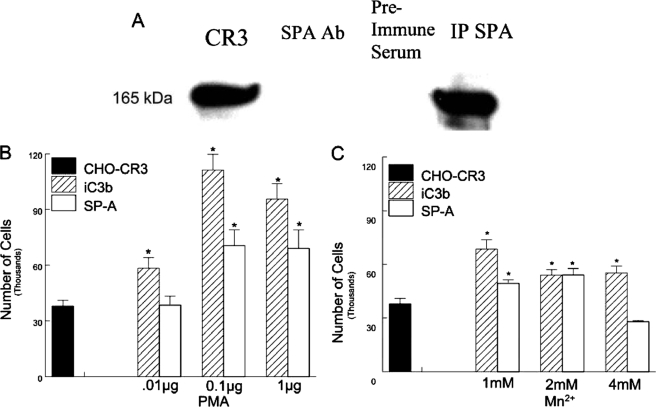FIGURE 5.
Binding of SP-A to CR-3 requires conversion to the active conformation. The interaction of SP-A with CR3 was determined by co-immunoprecipitation. A, in the first lane is an immunoblot of peritoneal cell lysates, the second lane is a control in which SP-A was omitted from incubation with the peritoneal lysate, the third lane shows preimmune serum rather than an anti-SP-A antibody was coupled to the gel suspension that was used for immunoprecipitation, and the fourth lane is an anti-SP-A antibody coupled to a gel suspension shown to co-immunoprecipitate CR3, detected by immunoblot analysis. Binding of SP-A to CR3 was determined in a whole cell assay, in which bound cells are detected by cell lysis and the quantification of associated alkaline phosphatase. Concentrations of PMA from 0.1 to 1 μg were required for sufficient activation of CR3 to bind SP-A (B). Binding of SP-A to CR3 was also enhanced by 1–2 mm Mn2+ (C). iC3b was used as a control. Data are mean ± S.E. of the total number of cells bound with n = 4 experiments per group, *, p < 0.05 compared with binding to non-stimulated CHO-CR3 cells.

